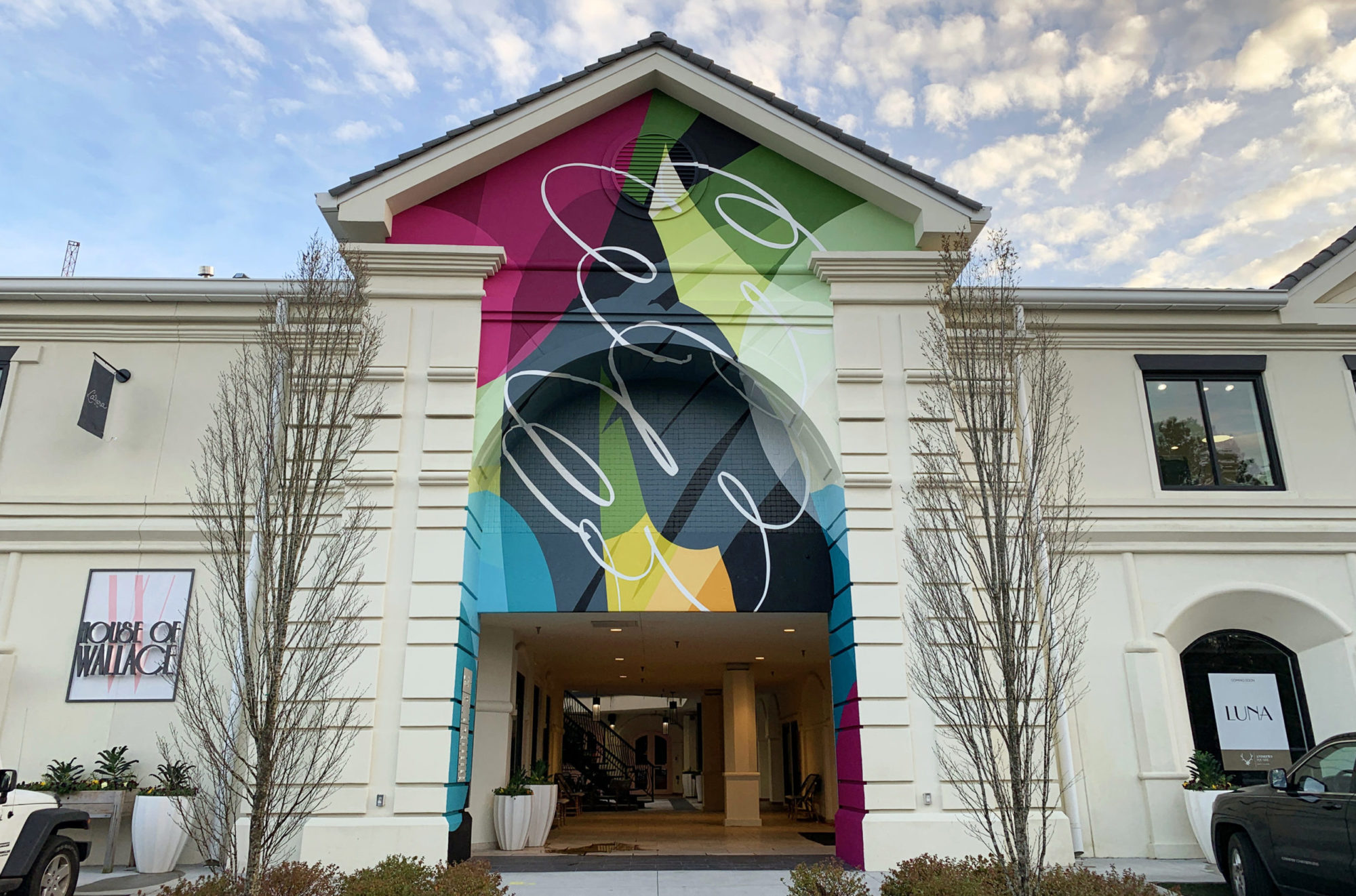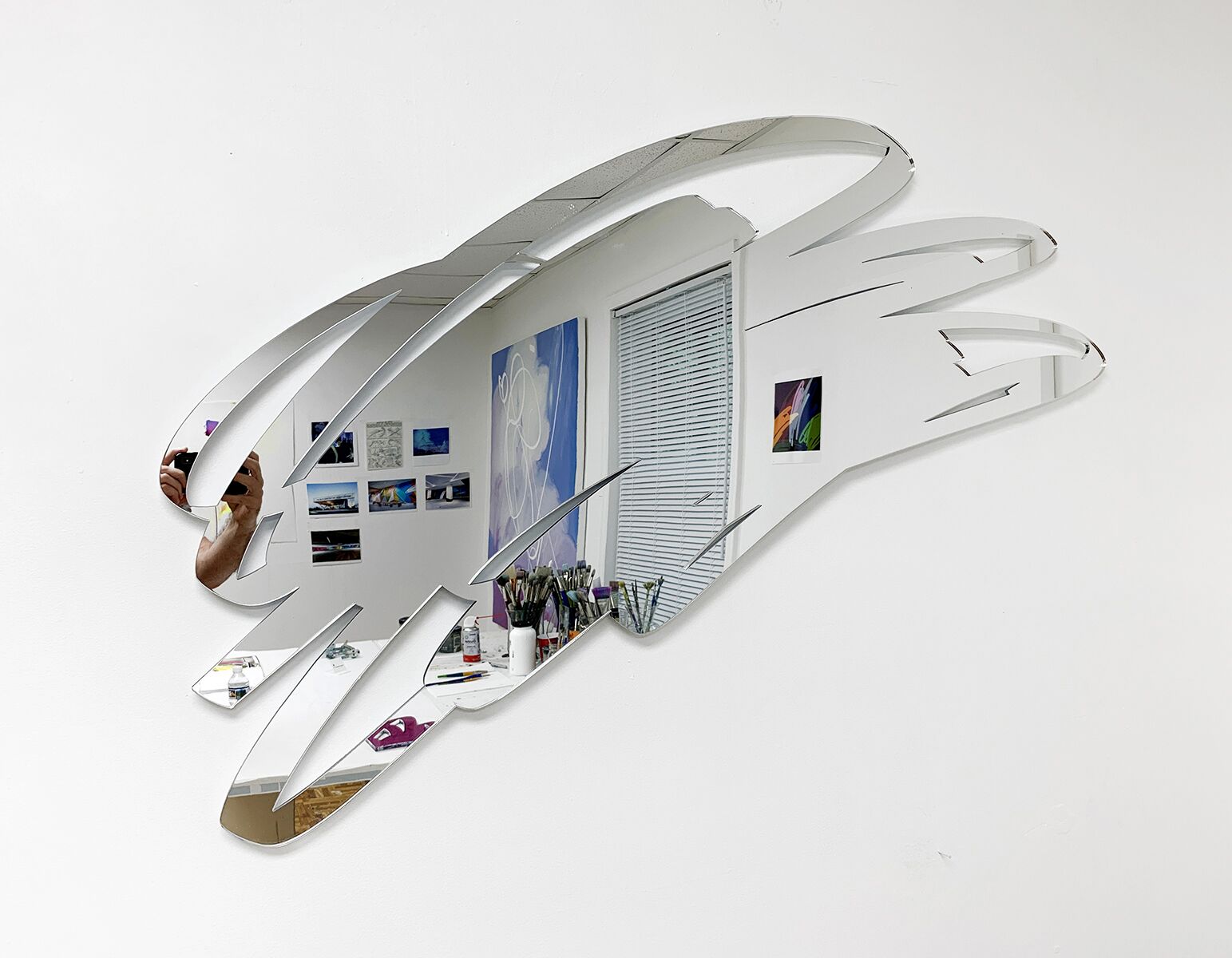Ryan Coleman: Sophisticated Slapstick

Share:
ART PAPERS: Where do you look for inspiration?
Ryan Coleman: I find inspiration in art history, contemporary art, and my love of cartoon art and classic 2-D animation. I’m always on the lookout for reference imagery. I’m attracted to sketches and stills from vintage “cel” animation: the colors, the juxtaposition of painted backgrounds with super flat characters painted on acetate, and just the overall beauty of them. On the flip side, I’ve also got one foot in art history. I’m looking to abstract expressionism, pop art, and other significant movements as inspiration. As an artist, you participate in the narrative of art history, and I find this to be really exciting.
AP: What do you hope for people to think or feel when they experience your work?
RC: My whole goal as an artist has been to make work that uplifts the viewer. Also to spark contemplation in some way, hinting at the unknown, the mysterious. I’m interested in philosophical ideas that try to make sense of the world. Working in abstraction can participate in this exploration, especially when the chaos starts to make sense and a harmony is created through the work. Using colors, shapes, and forms found in cartoons and animation likewise helps to lighten the heaviness of these pursuits and adds a sense of optimism.
AP: Your studio practice includes paintings, drawings, prints, and sculptures, but recently you’ve been painting a lot of large, high-profile murals. Can you tell me where people might have seen your work without even knowing?
RC: I love bringing my work out of the studio and into the public, making it massive, and having people interact with it on a daily basis. A number of my murals are indoors in hotels, corporate buildings, but most are visible to the public. Last year I did two large vertical murals on the outside of Andrews Square shopping center in Buckhead, one being on the side of Henri’s Bakery & Deli which is pretty visible from the street. There are three in midtown at the new Hilton Canopy hotel, a large exterior 2,000-square foot painting at Northside Hospital, and one directly across the street from the High Museum of Art in the lobby of the Promenade building (visible from outside on 15th Street). Also last year, I had the opportunity to paint huge walls of the entrance of the Modera Buckhead resident parking garage which was awesome. It was challenging, but also rewarding… Painting parking garages is really fun, because it can be like driving through a gallery installation. In 2017 I painted a 100-foot long mural in downtown Atlanta outside of Five Points Marta station, leading into Broad Street Plaza. I’m really thankful for the opportunities I’ve had up to this point.
Andrews Square shopping center in Buckhead
AP: Your father worked as an animator for Disney, and you also worked as an animator for Cartoon Network for a time. I know that your work is deeply influenced by animation. Why did you decide to pursue a life as an artist, rather than a career as a professional animator? What does art making do for you that working as an animator wouldn’t have done?
RC: My earliest memories of learning to draw were copying comic strips from the newspaper, and an early favorite was Garfield. My dad was a professional cartoonist [when I was] growing up, and he would sit at a light table for hours meticulously hand inking a well-known comic strip. I learned to appreciate the art and history of cartooning and animation through him. My mom is a very creative person too, and an interior decorator, so being creative was always encouraged growing up.
I went to the Atlanta College of Art in 1997 and earned a BFA in painting in 2001. After graduating I got a job doing freelance animation for Cartoon Network, working on traditional 2-D animation. It was a really neat experience, especially because it seemed like the last wave of drawing the animation on paper, as opposed directly onto the screen like how it’s done now. After about a year, though, I began getting restless, and I wasn’t sure I could sit at a drawing table for long periods of time. My creative energy was directed primarily to the studio work I was doing in my off hours. In 2003, the opportunity came up to move to New York City and I took it. I got a job working as a studio assistant for Jeff Koons, and experienced that for the next eight years, which was amazing.
Ultimately, I always had my own studio practice in mind, and in 2011 my wife and I moved back here to Atlanta, with the goal of being able to focus more on my own work. My primary interest has been directed at the pursuit of making art and exploring the power it can bring.
Hilton Canopy hotel
AP: Your work is bright, energetic, and playful, but also very crisp and meticulous. How do you balance the fun and exuberant aspects of making your work with the amount of control you obviously need to achieve the final artwork?
RC: I’ve always leaned toward really expressive work, gestures and mark making, while also being attracted to really clean, bold work. These two dichotomies come in to play in my own work, creating large, spontaneous scribbles and gestures, done in a clean, bold way. It’s a nod to the power of gesture, like plucking a scribble out of a Cy Twombly painting, and cartoonifying it.
AP: When did printmaking first come into the picture?
RC: Printmaking first came into the picture a few years ago. Recently I’ve been working with Backside Press on several editions. I really enjoy the process of designing the print, then seeing the design come to fruition on different papers and being introduced to different inks through the printer. I’m really excited about the exclusive edition we created for the ART PAPERS Auction with Backside Press. It’s on a beautiful reflective mirror paper.
AP: What are your plans for 2020? Do you have upcoming shows or projects you’d like to share?
RC: Continuing the practice of making studio work and doing large-scale mural projects both here in Atlanta and other cities. Additionally, I’ve been working on some larger, free standing sculptural works that I’m really excited about.
AP: What are your all-time favorite works of animation?
RC: I’d be amiss not mentioning the classic early Disney films, but I also love the earliest animation shorts from the 1920s and early 1930s known as rubber hose animation. Most anything by Chuck Jones, there’s just so much great stuff that’s been made. I like the sophisticated classics, but also the silly low budget slapstick stuff.
***
Learn more about Ryan at ryancolemanart.com.
View Ryan’s print for the 21st Annual ART PAPERS Art Auction here.
Learn more + get tickets to the Auction here.








